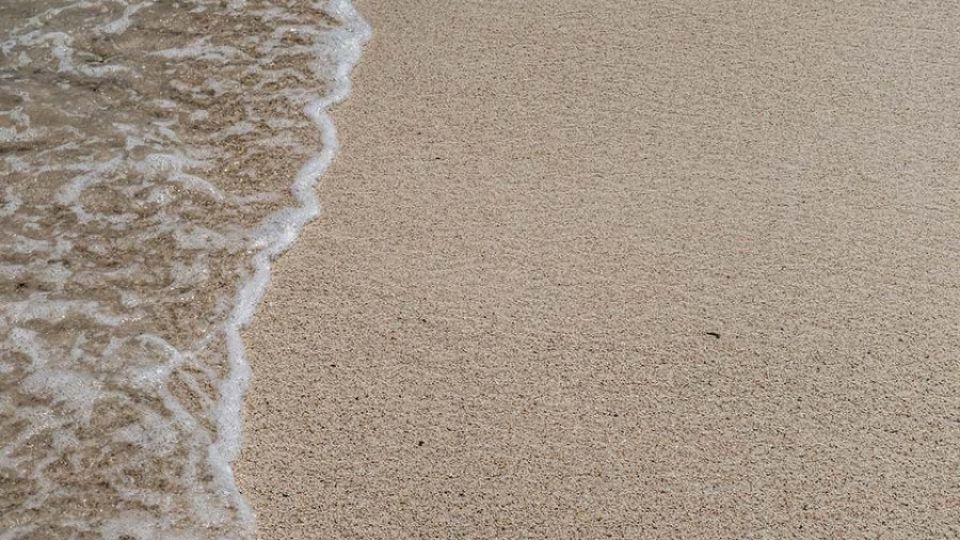September 27, 2024
JAKARTA – Arecent decision made by President Joko “Jokowi” Widodo’s administration to lift a decades-old ban on sea sand exports has raised concerns that it may jeopardize the country’s islands and the people living on them.
The Trade Ministry recently issued two ministerial regulations that would allow sea sand exports, after they were previously banned for more than 20 years. The ministerial regulations are the derivative policy of a 2023 government regulation (PP) on the management of marine sediment, with a provision allowing Indonesia to export dredged sand.
The Maritime Affairs and Fisheries Ministry later announced that the areas in which dredging for export would be permitted included the waters off Natuna Islands in Riau Islands where around 9 billion cubic meters of sand can be dredged, more than half of total 17 billion cubic meters sediment potentially extracted across the archipelago.
Observers argue that sea sand importers, such as Singapore, which has been using imported sand to reclaim land, will benefit the most from the policy that will go into effect starting Oct. 8.
But Jokowi denied that his administration, which comes to an end on Oct. 20, would reopen the export of sea sand.
“It’s not sea sand. What we [will export] is sediment that has been disrupting ships passing through the waters. It looks like sand, but it’s classified as sediment,” the President said on Sept. 17, as quoted by kompas.com.
Read also: Java Sea, Natuna waters open for sea sand mining, ministry says
By sediment that blocks ships, Jokowi may have been referring to sand mixed with mud that is mostly located around river mouths, said Muhammad Karim of the Center for Ocean Development and Maritime Civilization Studies (PK2PM), as sand on the sea floor rarely obstructs marine navigation.
“But I don’t believe the government will export such sediment as its color is very dark, muddy and even contains debris,” Karim said during a public discussion last Friday.
“I don’t think Singapore would want to buy such muddy sand,” he continued, adding that sand from around Natuna was claimed to be the most ideal for land reclamation.
Disappearing islands
Many parties have warned against the impact of sand dredging, with Pascal Peduzzi, director of the United Nations Environment Programme’s (UNEP) analytical center, warning that sand mining could affect biodiversity and sea currents in a statement published last year.
Sand dredging has been blamed for the disappearances of dozens of islands across the archipelago, mostly located in Riau and off the coast of Jakarta. Coastal communities that once lived on Ubi Besar Island in Thousand Islands regency, Jakarta, were forced to move to neighboring islands after seawater submerged their island, reportedly as a result of sea sand mining.
Residents of Tunda Island in Serang, Banten, have also been complaining that continuous sand dredging about 5 kilometers offshore has eroded the shoreline and destroyed coral reefs.
An increase in sand dredging that would be likely to occur following the export reopening could also lead to intensified flooding in coastal areas, such as Demak, which has partially submerged from massive erosion triggered by reclamation projects in the area, said Susan Herawati of the People’s Coalition of Fisheries Justice (KIARA).
“We won’t have the sand anymore, which is useful to hold off the sea waves and coastal flooding,” she said.
Meanwhile, Greenpeace Indonesia campaigner Afdillah argued that sea sand dredging would exacerbate conflict among fishing communities living near to the mining sites.
He cited the case of sand dredging in Spermonde Archipelago in Makassar, South Sulawesi, which caused murky waters and damaged reefs, destroying the fish catchment area.
Read also: Java Sea, Natuna waters open for sea sand mining, ministry says
The dredging, aimed for the construction of the Makassar New Port, is being carried out by Dutch dredger Queen of the Netherlands, one of the world’s most sophisticated dredger vessels.
“To date, we haven’t seen any sand extraction practices that don’t impact the environment and local communities,” Afdillah said.
For dormant projects?
Former maritime affairs and fisheries minister Susi Pudjiastuti has also opposed the policy, writing on her X account on Sept. 18 that the dredged sand should be used to mitigate coastal erosion on Java’s northern coastline, rather than being exported.
Ahmad Muzani, secretary-general of president-elect Prabowo Subianto’s Gerindra Party, also called on the government to postpone and reevaluate the policy on sea sand exports, as reported by tempo.co.
KIARA’s Susan alleged that the sea sand exports were designed to clear the way for 33 sand mining licenses that have been inactive since 2022 due to insufficient demand for reclamation projects in the country. The group cited Maritime Affairs and Fisheries Ministry’s data that the domestic need for sea sand was only around 421 million cubic meters.
While various environmental groups have urged the government to repeal the policy immediately, KIARA said it was considering filing a judicial petition with the Supreme Court either against the PP or the Trade Ministry regulations.


